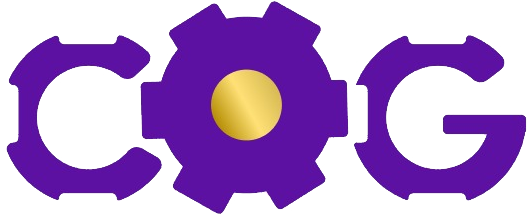In today’s dynamic work environment, achieving sustained success is not just about making profits or expanding your market scope. It is much deeper than that; it lies in creating a purpose-driven workplace that fosters high employee engagement and satisfaction. Not sure what that means or why it’s so important? Let’s break it down!
Definition of a Purpose-Driven Workplace
A purpose-driven workplace, in simple terms, can be defined as an environment where individuals collectively work towards a shared ambition, beyond just the financial outcomes. It is a place that:
– Emphasizes value contribution
– Promotes collaboration and inclusivity
– Cultivates ethos aligned with the organization’s core philosophy and goals
Importance of Employee Engagement and Satisfaction in the Workplace
Employee engagement and satisfaction are crucial metrics when assessing the morale, productivity, and overall health of your workforce. It’s not just about personal fulfillment; highly engaged and satisfied employees:
– Consistently perform at their peak
– Exhibit low turnover rates
– Are more likely to become committed brand advocates
Simply put, engaged and satisfied employees are your greatest assets, making the idea of a purpose-driven workplace not only appealing but a requisite for organizational success.
Benefits of a Purpose-Driven Workplace
There’s no denying that a purpose-driven workplace yields numerous benefits, not only for employees but also for the organization as a whole. It goes beyond the notion of a typical ‘desk job’ and gives employees a reason to make each day count.
Higher Employee Retention and Productivity
– Reducing Turnover Rate: If employees feel a connection to the company’s purpose and vision, they’re much less likely to look elsewhere for employment. This higher job satisfaction leads to lower turnover rates, saving the company valuable resources in the hiring and training process.
– Boosting Productivity: When employees feel that their work is meaningful and making a difference, it can fuel their motivation and drive, resulting in increased productivity and efficiency.
Enhanced Organizational Reputation and Brand Attractiveness
Quenching the Public’s Thirst: In today’s socially conscious landscape, people want to support and work for companies that stand for something. A clear, driving purpose makes your organization attractive to potential employees and consumers alike, therefore enhancing your brand’s reputation and reach. Aligning your brand with a positive and meaningful purpose can be a powerful asset in standing out in today’s competitive marketplace.
Strategies for Creating a Purpose-Driven Workplace
Define and Communicate the Company’s Mission and Values
First and foremost, a purpose-driven workplace starts with a clear mission and a set of core values. It’s essential to define and consistently communicate these elements across all levels of the organization. Each employee must understand what the company stands and strives for. Here are key tactics:
– Make the company’s mission and values visible: Post them in common areas, incorporate them into the company’s internal communication, and make them part of everyday conversations.
– Provide regular training: Encourage employees to internalize and embody these values in their day-to-day activities. Role-play scenarios, workshops, and seminars can be helpful.
Develop a Compelling Vision that Aligns with Employees’ Values and Aspirations
Equally important is crafting a vision that engages employees on a personal level. This vision should resonate with the team’s values, fuel their aspirations, and give them a sense of personal investment in the organization’s journey. To achieve this:
– Elicit input from employees: Understand their personal values and aspirations and align them with the organization’s vision.
– Regularly communicate the vision: Use every suitable platform to reiterate where the company is headed and how it plans to get there.
Fostering Employee Engagement in a Purpose-Driven Workplace
A purpose-driven workplace is one that embodies a clear, meaningful mission and encourages employees to connect their individual work to the larger company purpose. To foster employee engagement in such a workplace, there are a series of strategies that companies can employ.
Encourage Open Communication and Feedback
Open communication and feedback are crucial components of an engaged, purpose-driven workplace. Encouraging employees to speak up and voice their ideas and concerns without fear of backlash can stimulate engagement. This can be achieved through:
– Regular employee surveys
– Open-door policies
– Regular team meetings for updates, discussions, and brainstorming sessions
– Confidential feedback channels
Provide Opportunities for Personal and Professional Growth
Giving your employees opportunities for growth is another effective way of ensuring their engagement. When employees see a clear path for advancement, they are more likely to feel invested in the company. This not only improves satisfaction but also drives greater productivity. Areas to focus on include:
– Regular training and development opportunities
– Conferences, seminars, and workshops
– Job rotations and promotions
– Mentoring programs and peer coaching
Promoting Employee Satisfaction in a Purpose-Driven Workplace
A key element of cultivating a purpose-driven workplace comes down to promoting high levels of employee satisfaction. There are several strategies you can implement to reach this goal.
Foster a Positive Work Environment and Supportive Culture
Creating a positive work environment is at the core of ensuring employee satisfaction. Prioritize open and transparent communication, encourage team collaboration, and regularly conduct check-ins to understand and address employee concerns. Here are few ways to do so:
• Encourage employees to share their ideas and feedback.
• Promote wellness programs that support physical and mental health.
• Create opportunities for social interactions and team building.
Recognize and Reward Employees’ Achievements and Contributions
Recognition is a powerful driver of satisfaction. Publicly acknowledging the hard work and contributions of your team can boost morale, inspire greater productivity, and increase overall job satisfaction. Various recognition ideas might involve:
• Creating an employee of the month program.
• Giving shout-outs in company newsletters or team meetings.
• Offering bonuses or other tangible rewards for exceptional performance.
Remember, a purpose-driven workplace is all about ensuring your employees feel valued, supported, and part of something meaningful.
Case Studies: Successful Purpose-Driven Workplaces
We don’t have to wander in the wilderness when it comes to building a purpose-driven workplace. Plenty of successful examples exist from which we can learn. Let’s look at a couple of notable case studies to inspire our strategies.
Example 1: Company X – How they transformed their workplace culture
Company X was dealing with declining employee satisfaction and motivation. To alter this trajectory, they embarked on a journey to redefine their workplace culture. They involved employees in setting a clear organizational purpose and aligned their everyday tasks towards it. As a result, their workplace became more focused, and it’s what boosted overall satisfaction. Here’s what they did:
* Engaged employees in decision-making processes
* Organized purpose-themed team building activities
* Recognized and rewarded employees who exhibited commitment towards the company’s purpose
Example 2: Company Y – Strategies for promoting employee engagement and satisfaction
In Company Y, emphasis was laid on creating a satisfied and engaged workforce. They implemented various strategies such as:
* Regularly communicating the company’s core values to remind employees of the larger mission
* Providing ample opportunities for professional growth
* Establishing consistent and fair reward systems
Their efforts resulted in higher employee engagement and satisfaction levels, leading to an overall increase in productivity.
Overcoming Challenges in Creating a Purpose-Driven Workplace
Developing a purpose-driven workplace can pose some challenges, especially given that it entails a significant shift in culture and mindset, but these hurdles can undoubtedly be overcome with the right approach.
Resistance to Change and Shifting Mindsets
One of the most common hurdles is resistance to change. Employees may feel comfortable in their existing routines and may fear that a fresh approach will disrupt their workflow or threaten their job security. Here are some strategies to address this:
– Communicate the benefits: Explain to your employees that a purpose-driven workplace not just benefits the company but also contributes to their personal growth and satisfaction.
– Encourage open dialogue: Address their fears and concerns openly, and take their input when formulating change strategies.
Aligning Individual and Organizational Values
Another challenge is aligning the personal values of your employees with the broader organizational goals. This might take time and patience, but it’s fundamental to cultivating a purpose-driven workplace. Here are few ways to achieve it:
– Promote understanding: Help employees understand how their roles contribute to the larger organization’s mission.
– Encourage personal and professional development: Provide opportunities for employees to grow in areas that match both their personal interests and support the company’s goals.
Measuring and Evaluating the Impact of a Purpose-Driven Workplace
The shift towards a purpose-driven workplace can significantly improve both employee engagement and satisfaction. Yet, without the proper metrics in place, the overall impact can be challenging to measure accurately.
Key Metrics for Assessing Employee Engagement and Satisfaction
A couple of important parameters can help gauge the effectiveness of your purpose-driven strategy:
– Employee Engagement Score: This score measures an employee’s emotional commitment and involvement in their work. High scores indicate a highly engaged workforce.
– Employee Satisfaction Score: This score assesses the contentment of your employees towards work conditions, benefits, and work-life balance.
– Retention Rate: The higher the retention rate, the more successful your workplace in maintaining employee satisfaction and engagement.
Conducting Regular Employee Surveys and Feedback Sessions
Regular surveys act as a direct channel to obtain employees’ thoughts and feelings about their work environment. These analyses provide necessary insights about what’s working and what needs improvement. Additionally, feedback sessions clarify any misunderstandings and offer an opportunity for management to address employee concerns proactively. Understanding your workforce’s needs creates a climate of trust and transparency, reinforcing the appeal of a purpose-driven workplace.
Recap of Strategies for Cultivating a Purpose-Driven Workplace
Cultivating a purpose-driven workplace is not just about developing a set of well-defined values and making profit. It’s about creating a work environment where each employee understands how their efforts contribute to the greater company mission. From establishing a strong foundation of trust, sparking open dialogue through regular feedback sessions, to investing in continuous employee learning and development programs, we’ve outlined several strategies that can help businesses foster a deeper sense of purpose within their employees.
• Fostering trust and transparency
• Encouraging open dialogue
• Investing in employee development
Benefits of Investing in Employee Engagement and Satisfaction
As businesses, it’s crucial to understand that investing in employee engagement and satisfaction comes with impressive returns. Studies have shown that engaged employees are more productive, give higher customer satisfaction rates, and are less likely to quit. They show up every day with passion, purpose, presence, and energy to make a difference. This not only benefits the company’s bottom line but also enhances the overall workplace culture. A purpose-driven workplace fosters innovation, encourages collaboration, and promotes a positive work environment – elements that are key to any successful business.
Thus, building a purpose-driven workplace is not a luxury, but a necessity in today’s business world
Help Driving Purpose in your Teams!
We strive to bring you comprehensive HR solutions tailored to your business needs.
Core OpsGenie will help you build a purpose-driven workplace and leverage the right technologies to make your processes and procedures scalable and replicable. Reach out today to learn more about what Core OpsGenie can do to help your organization stay current and future-ready.




